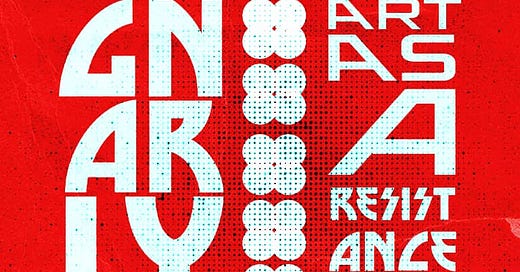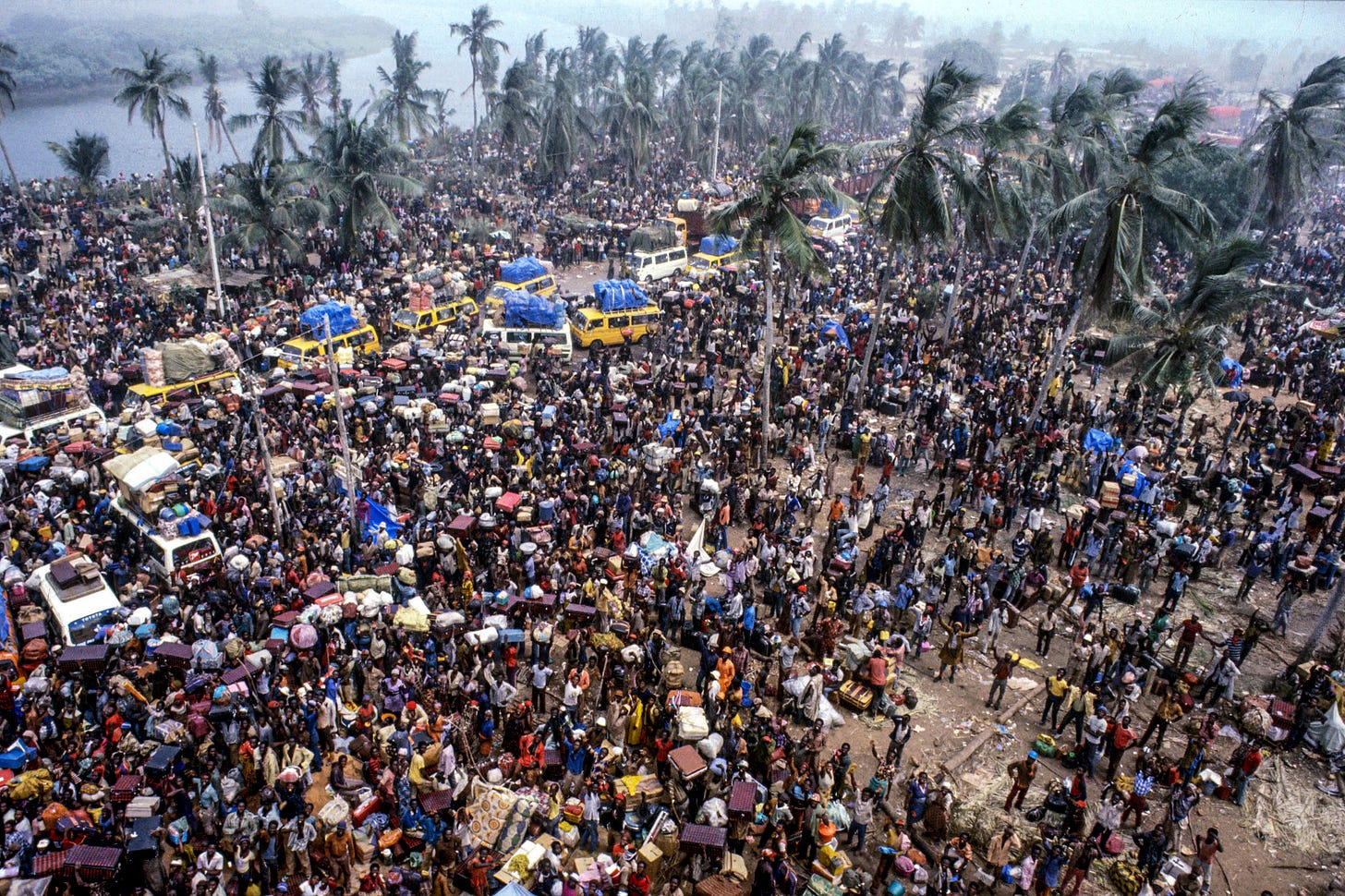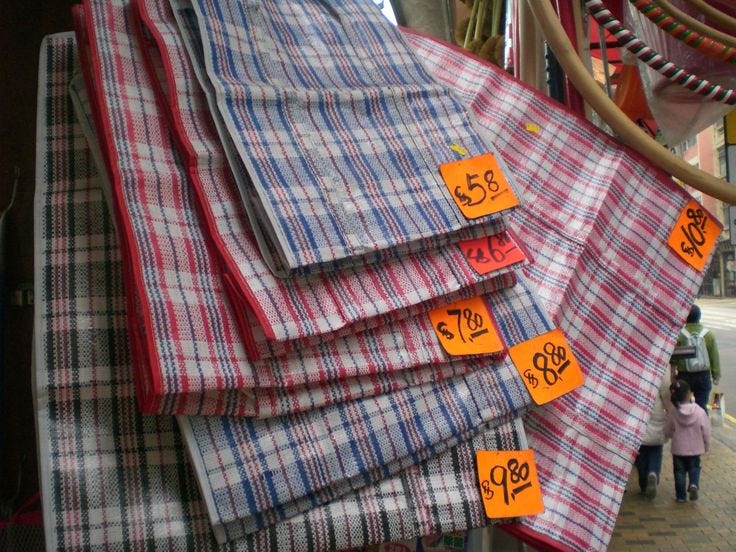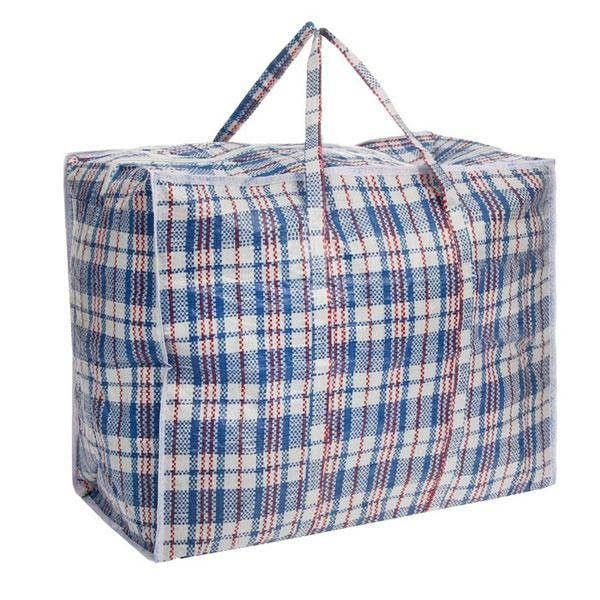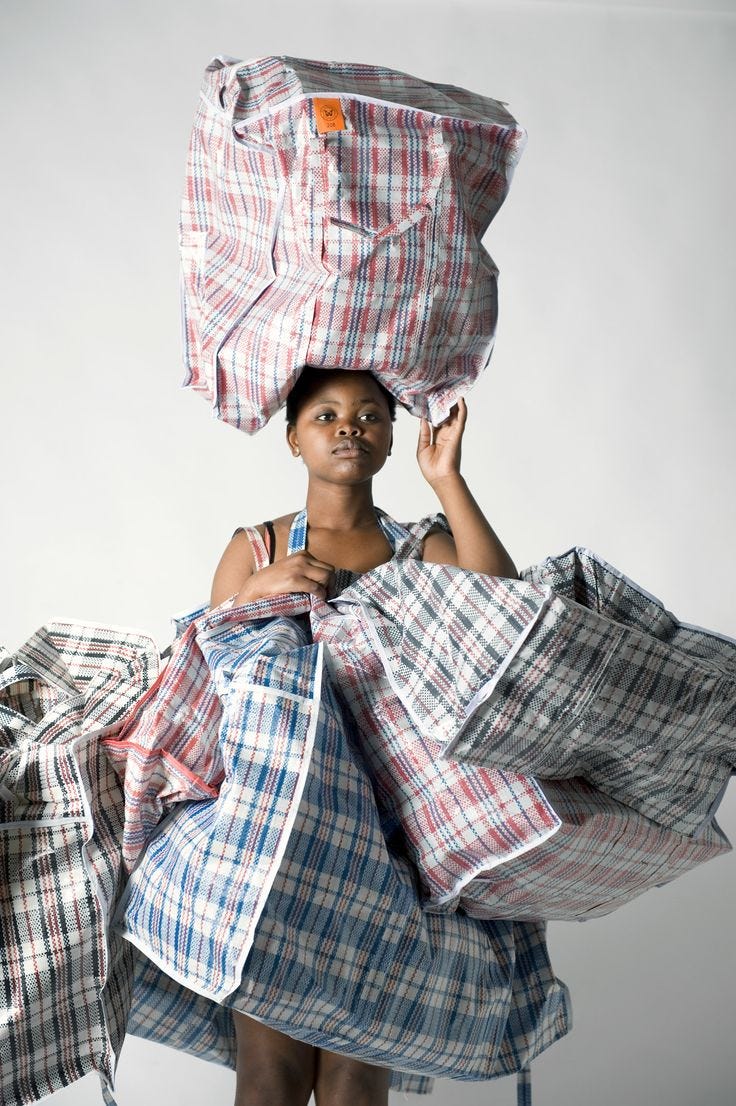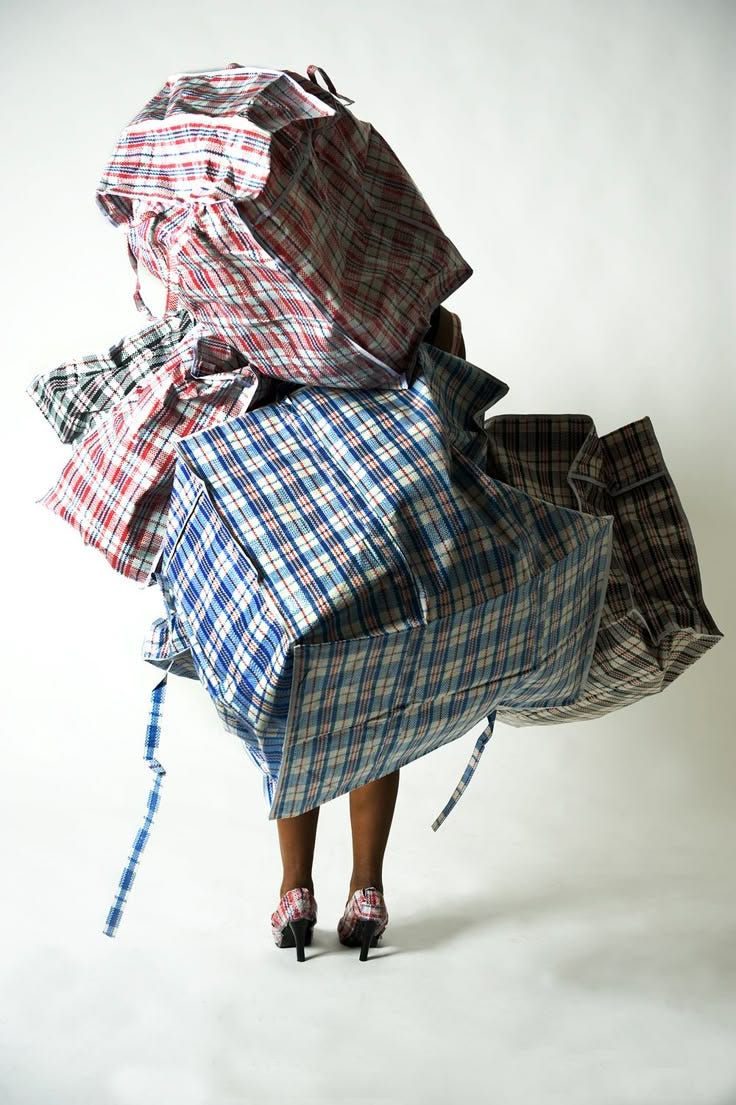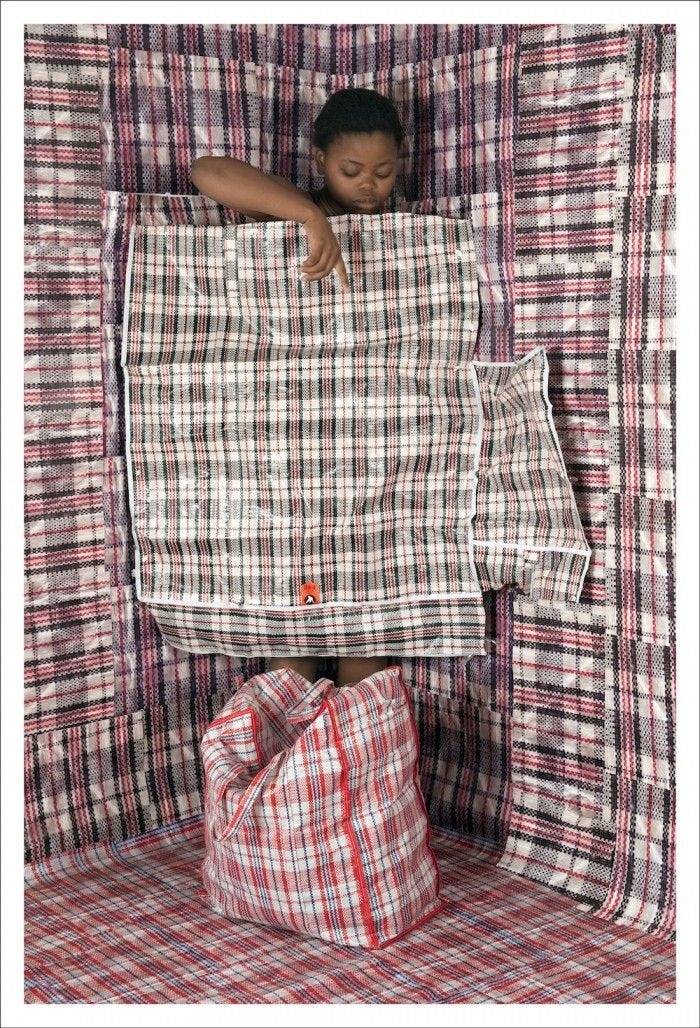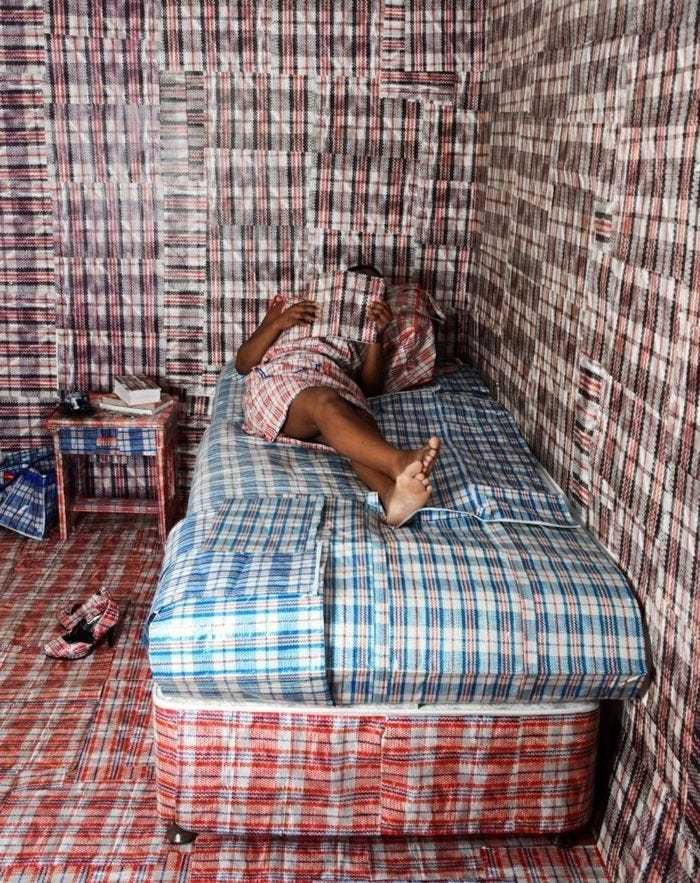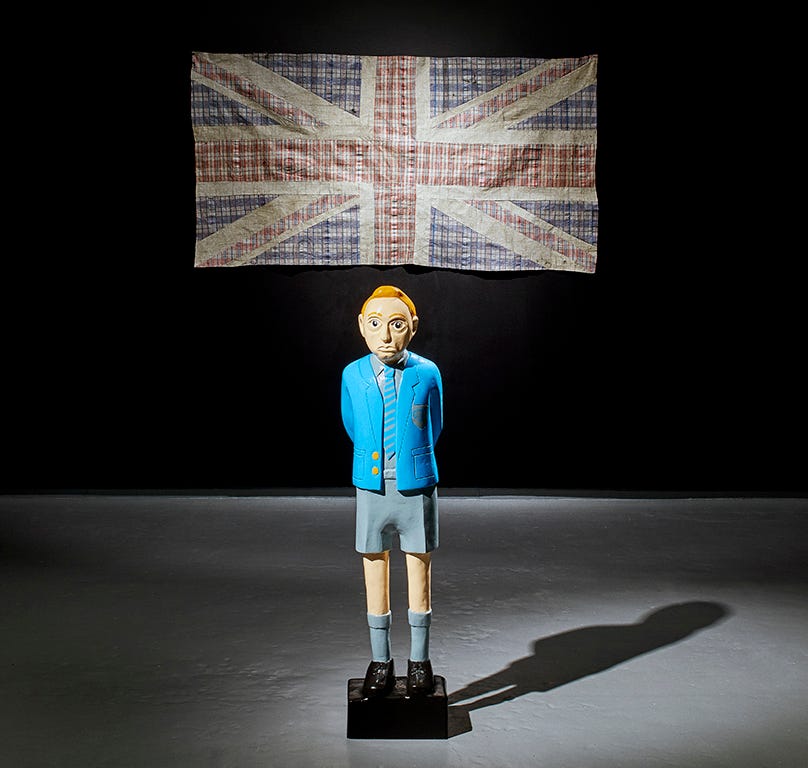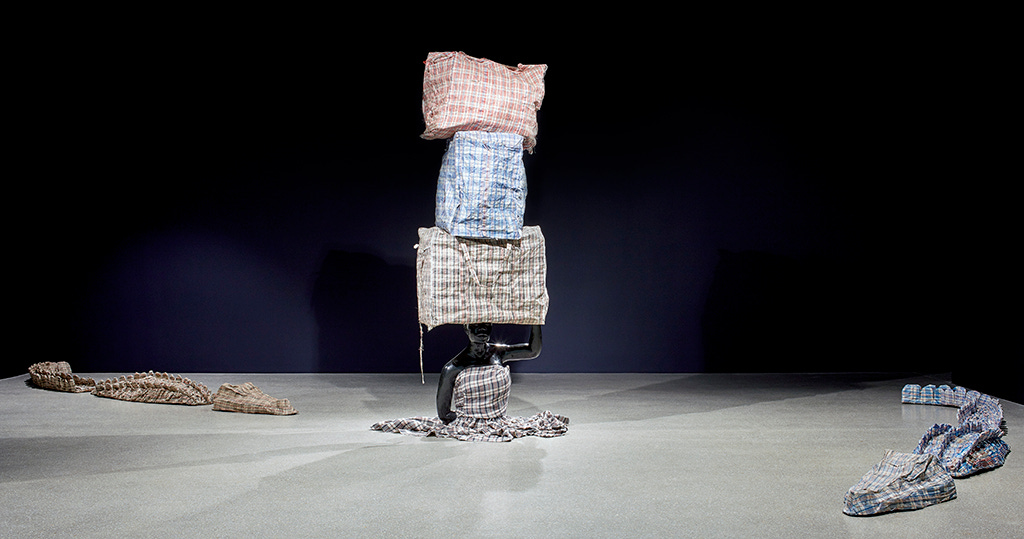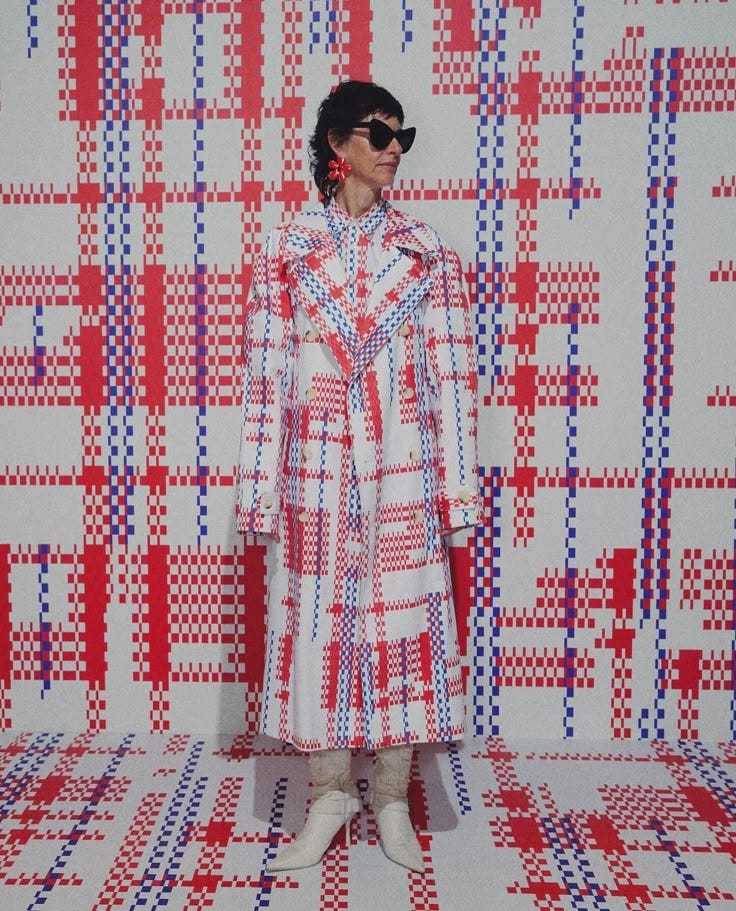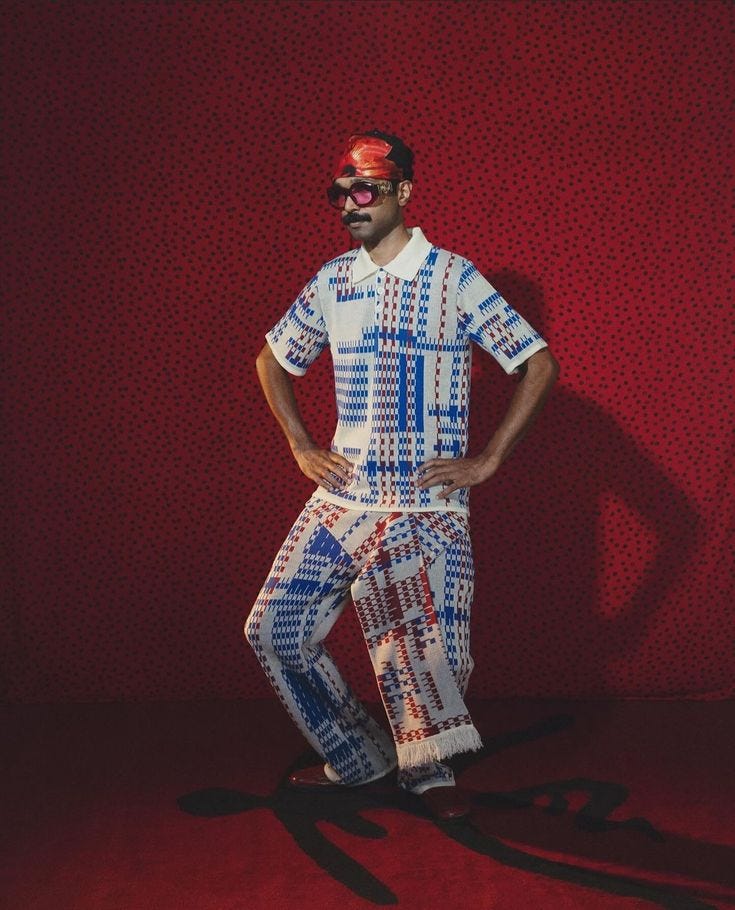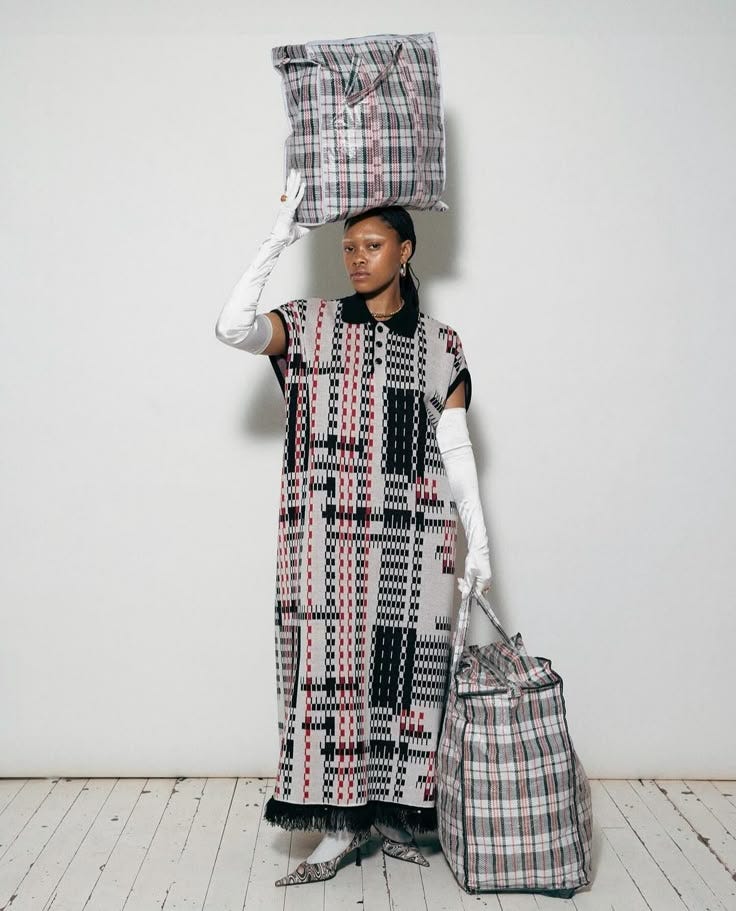With plaid often identifying as an aristocratic and classist fabric worn by the ‘highs’ of the social strata, with the red, white and blue stripes carrying the pride that rests in the allegiance to its patriotic nation; “Ghana must go” bags stand for the opposite. The plastic/nylon fabric embedded with red, white and blue stripes tells the story of those in the latter. The pit. And the very bottom of the barrel.
GHANA MUST GO
During the early 1980s, Nigeria’s then-president, Shehu Shagari, issued an order that forced illegal immigrants living in Nigeria to vacate or face implications. This was due to a great economical recession and a response to religious disturbances like the kano riots. Out of 2 million illegal immigrants in Nigeria, about 1 million of them were Ghanian nationals.
With 2 million illegal immigrants, unexpectedly forced to leave their lives behind and take what they could, the only tool that could help them was a cheap nylon bag, spacious and strong in its greatest ability. Nigerian traders sold out of the bags and the expulsion of Ghanian and other nationals was well under way as they trekked through Benin and Togo until, eventually, they arrived in their crisis-stricken countries.
“But it was when people started calling them “Ghana must go” bags that the young man knew it was time to leave.”
It’s funny how these bags, despite where you are, whether it is the West African region or the Southern African region, the name of the bag will always carry a very unwelcoming undertone. Ghana must go was a name that was bred by hate and hostility. A name that expresses that violence could’ve happened if the circumstances that fell onto those illegal immigrants had not happened.
In Germany, these bags are called Tuekenkoffer, which references its immigrant population. In South Africa, the bag is more commonly known as China bags, Zimbabwe bags, Khumbulekhaya bags or Mashangaan bags. And so many more in different nations. The point is, these red, white and blue nylon bags have become a symbol of mobility and immigration. They are associated with poverty and the general alienation from our very own people.
THE ARTIST’S TOUCH ON IT:
“umaskhenkethe liKHAYA LAM“ by Nobukho Nqaba
“The bag is a personal reminder of my own migration within South Africa. I have experienced many of the challenges of a migrant and it took me a long time to adjust to life in the places that I have moved to.”
Born in Butterworth, Eastern Cape, Nobukho Nqaba is a photographer who is also a graduate of the Michaelis School of Fine Art. She describes her work as a way to speak about the concept of home, comfort and foreignness. Which is what “Umashenkhethe Likhaya Lam” dwells on the most.
As the concept of migration and alienation is the subject of the exhibition, the artist alludes to the power that these bags held in her life. Although they reminded her of her and her family’s struggles, they also instilled a drive to succeed within her.
“For me it symbolizes a home.”
‘Cross the River in a Crowd’ by Dan Halter
“Cross the river in a crowd and the crocodile won’t eat you.”
-Madagascan proverb
Born in Zimbabwe, Dan Halter, understands the feeling of being in transit. With the use of these blue, red and white bags- popularily known as Zimbabwe Bags in the southern Africa region, Halter reinforces themes of migration and trading, while informing those experiencing his work about their political history.
“A baby on its mother’s back doesn’t know the journey is long”
The press release states that while the bags, or better yet, the blue, red and white plaid fabric, has become some kind of popular visual rhetoric as a symbol of urban style, it also signifies a collective trauma of genocide, warfare and civil insurrection. And these factors are explored throughout the exhibition as Halter
“My work deals with my sense of dislocated national identity, human migration and the dark humour of present realities in Southern Africa.”
-Dan Halter
Migrating Dreams Will Always Find a Home- Wanda Lephoto
Emanating with the histories of our people and letting the tailored pieces speak for themselves, Wanda Lephoto makes sure his clothing have that effect. In fact, that is wat fashion is for him. As 1/2 of his group, The Sartists, he still manifests the artist image of the group- providing “sartorial-artistry” while also telling african stories through fashion.
-Wanda Lephoto on GriotMag
As we see from the title of the collection, ‘Migrating Dreams Will Always Find A Home’, we already understand that immigration is the highlight- the story they are trying to tell. The use of the blue, red and white plaid fabric(customised in his own liking) was a clear use of intentionality. Mirroring the “Ghana Must Go” bags, while also embracing their sartorial identity.
Although these bags serve as painful reminders of genocide, warfare, immigration, poverty and the constraints brought about by colonialism, they also carry memories that inspire creativity. They fuel an inner drive and have become a part of a history that needs to be embraced in all its complexity.


